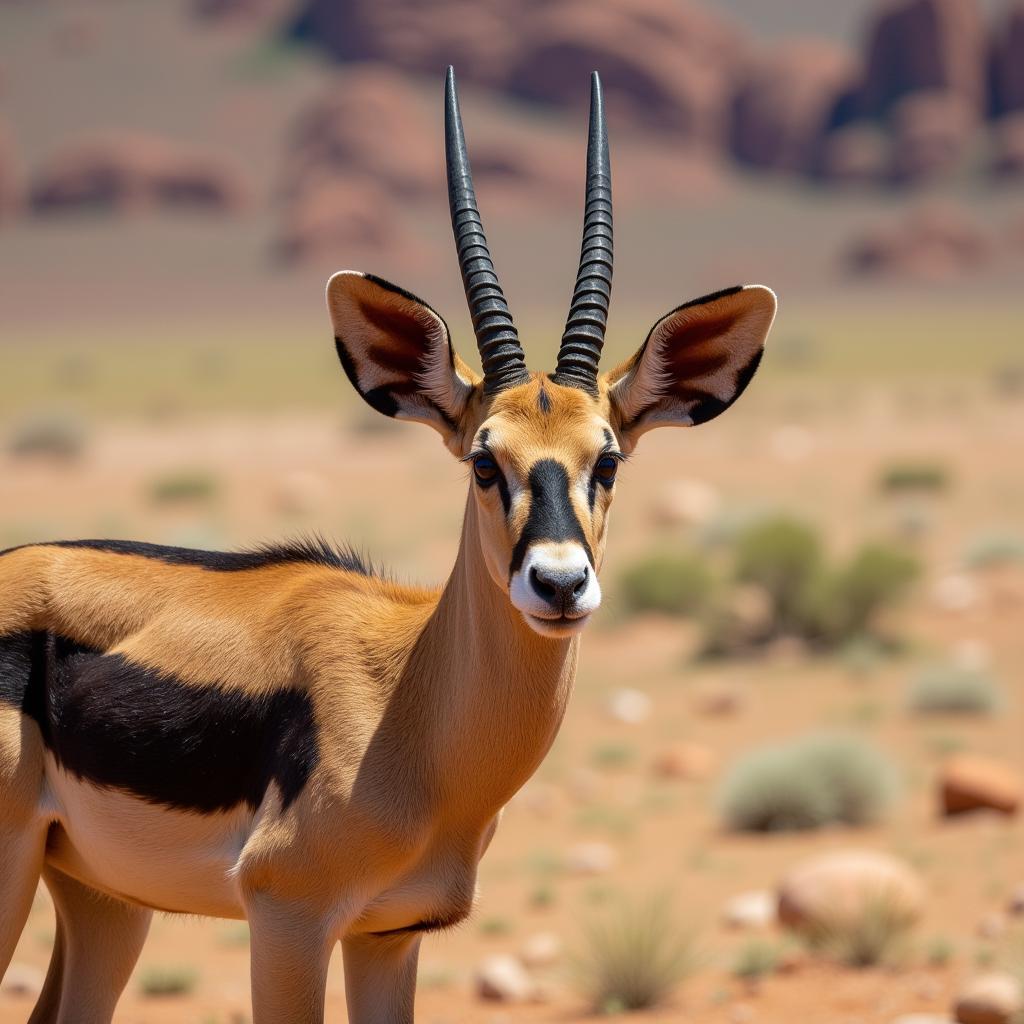Unveiling the Secrets of the African Wild Ass
The African Wild Ass, an enduring symbol of resilience and freedom, roams the arid landscapes of North Africa. Often overlooked in favor of their domesticated counterparts, these creatures possess a unique beauty and play a vital role in their fragile ecosystem. This article delves into the captivating world of the African wild ass, exploring its physical characteristics, habitat, diet, social behavior, and the threats it faces in the 21st century.
Physical Adaptations for a Harsh Environment
Perfectly adapted to survive in some of the harshest conditions on Earth, the African wild ass boasts a robust physique and a sandy-brown coat that provides excellent camouflage against predators like lions, leopards, and hyenas. Their long ears act as efficient heat regulators, while their strong hooves navigate rocky terrain with ease. Unlike their domesticated relatives, African wild asses have a distinct black stripe running along their back, adding to their striking appearance.
 African Wild Ass Physical Adaptations
African Wild Ass Physical Adaptations
Navigating the Arid Plains: Habitat and Distribution
The African wild ass primarily inhabits the grasslands, shrublands, and deserts of North Africa, ranging from Morocco and Algeria in the west to Eritrea and Somalia in the east. Within these regions, they favor areas with sparse vegetation and access to water sources, which are often few and far between. Their ability to survive on limited water and tolerate extreme temperatures is a testament to their remarkable resilience.
A Forager’s Diet: Sustaining Life in Arid Lands
As herbivores, African wild asses have adapted to thrive on a diet of grasses, herbs, and thorny shrubs, consuming almost any vegetation they encounter. Their digestive systems are highly efficient, extracting maximum nutrients from their food, even during periods of drought when vegetation is scarce.
The Social Fabric: Herds, Harems, and Hierarchy
African wild asses exhibit fascinating social behaviors, forming herds led by a dominant stallion and consisting of several females and their offspring. These herds, often referred to as “harems,” provide protection from predators and facilitate access to resources. Young males typically leave the herd upon reaching maturity, forming bachelor groups until they can establish their own harems.
Conservation Challenges: A Species on the Brink
Despite their resilience, African wild ass populations have experienced a significant decline over the past century, primarily due to habitat loss, hunting, and competition with livestock for resources. The International Union for Conservation of Nature (IUCN) classifies the African wild ass as “Critically Endangered,” emphasizing the urgent need for conservation efforts.
Protecting a Legacy: Conservation Efforts and the Future
Recognizing the importance of preserving this magnificent species, conservation organizations and governments are implementing various initiatives to protect the African wild ass. These include establishing protected areas, promoting sustainable land management practices, and raising awareness about the importance of conservation.
The African Wild Ass: A Symbol of Resilience and Hope
The African wild ass, with its ability to thrive in some of the harshest environments on Earth, serves as a powerful symbol of resilience and a reminder of the delicate balance of nature. By understanding the threats they face and supporting conservation efforts, we can help ensure the survival of this magnificent creature for generations to come.
FAQs about the African Wild Ass
-
What is the lifespan of an African wild ass? The average lifespan of an African wild ass in the wild is around 20 years.
-
How fast can an African wild ass run? African wild asses are surprisingly fast runners, reaching speeds of up to 40 miles per hour in short bursts.
-
Are African wild asses related to horses? Yes, African wild asses are closely related to horses and are considered to be the ancestors of domestic donkeys.
-
What is the biggest threat to African wild asses? The biggest threat to African wild asses is habitat loss due to human encroachment and the expansion of agriculture.
-
How can I help protect African wild asses? You can support conservation organizations working to protect African wild asses, raise awareness about their plight, and advocate for sustainable land management practices.
Exploring Further: Related Insights on African Wildlife
To delve deeper into the captivating world of African wildlife, consider exploring these related articles:
- African Hawk Eagle American Badger: Discover the fascinating relationship between these two apex predators.
- African Elephant Why Are They Endangered: Learn about the challenges facing African elephants and the efforts to protect them.
- African Grey Parrot Food in the Wild: Explore the diverse diet of these intelligent and social birds.
Need Assistance? We’re Here to Help
For inquiries or assistance, reach out to our dedicated team:
Phone: +255768904061
Email: [email protected]
Address: Mbarali DC Mawindi, Kangaga, Tanzania
We’re available 24/7 to assist you with any questions you may have.


